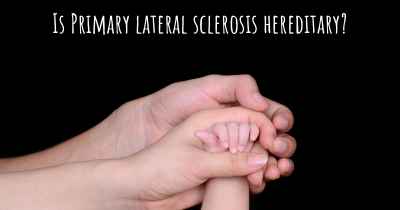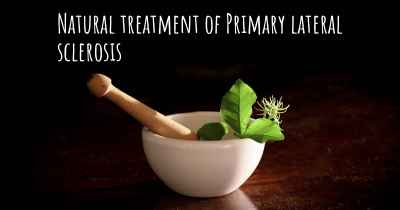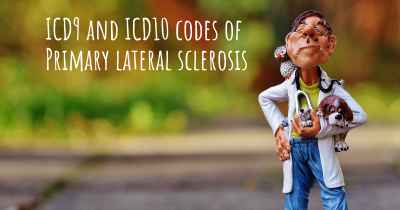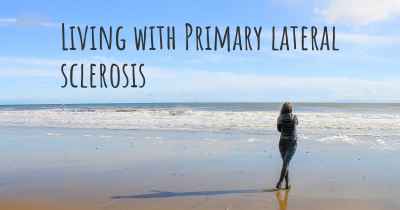What is the life expectancy of someone with Primary lateral sclerosis?
Life expectancy of people with Primary lateral sclerosis and recent progresses and researches in Primary lateral sclerosis
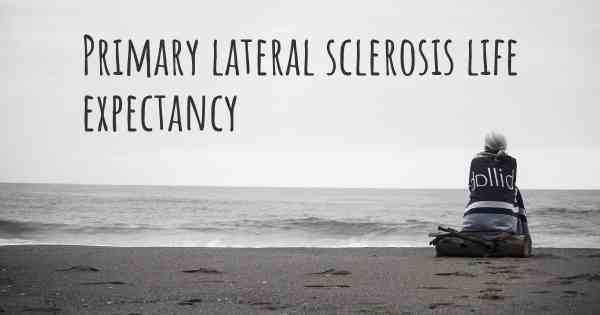
Primary lateral sclerosis (PLS) is a rare neurological disorder that affects the upper motor neurons in the brain and spinal cord. The progression of PLS is generally slow, with symptoms such as muscle weakness, stiffness, and spasticity. While PLS does not typically affect life expectancy directly, it can significantly impact an individual's quality of life and mobility over time.
It is important to note that PLS is a variable condition, and the prognosis can vary from person to person. Some individuals may experience a relatively stable course of the disease for many years, while others may see a more rapid progression. In general, the life expectancy of someone with PLS is not significantly reduced, and individuals can live for many years after diagnosis.
Primary lateral sclerosis (PLS) is a rare neurological disorder that affects the upper motor neurons in the brain and spinal cord. It is characterized by progressive muscle weakness and stiffness, leading to difficulties with movement and coordination. While PLS shares some similarities with amyotrophic lateral sclerosis (ALS), it progresses more slowly and primarily affects the upper motor neurons.
Due to the rarity of PLS and limited research on the condition, it is challenging to provide an exact life expectancy for individuals with PLS. The progression of the disease can vary significantly from person to person, making it difficult to predict the course of the condition accurately.
However, it is important to note that PLS is generally considered a slowly progressive disorder. The rate of progression can span over many years, often exceeding a decade or more. Some individuals may experience a relatively stable course of the disease for an extended period, while others may experience more rapid progression.
Factors Affecting Life Expectancy:
Several factors can influence the life expectancy of someone with PLS:
- Age at Onset: The age at which PLS symptoms begin can impact the overall prognosis. Generally, individuals who develop symptoms at a younger age tend to have a slower disease progression.
- Disease Progression: The rate at which PLS progresses can vary significantly. Some individuals may experience a gradual decline in motor function over many years, while others may experience more rapid deterioration.
- Respiratory Function: PLS primarily affects the upper motor neurons, which are responsible for controlling voluntary muscle movements. However, in some cases, the disease can also impact the lower motor neurons involved in respiratory function. If respiratory muscles become significantly weakened, it can increase the risk of respiratory complications and impact life expectancy.
- Coexisting Medical Conditions: The presence of other medical conditions or comorbidities can influence the overall health and well-being of individuals with PLS, potentially affecting life expectancy.
Management and Support:
While there is no cure for PLS, various treatment approaches can help manage symptoms, improve quality of life, and provide support:
- Physical Therapy: Physical therapy can help maintain muscle strength, flexibility, and mobility. It may involve exercises, stretching, and assistive devices to enhance independence and manage symptoms.
- Occupational Therapy: Occupational therapy focuses on adapting daily activities to improve functional abilities and maximize independence. It may involve assistive devices, modifications to the living environment, and strategies to conserve energy.
- Speech Therapy: Speech therapy can assist individuals with PLS in managing speech and swallowing difficulties that may arise as the disease progresses.
- Medications: While there are no specific medications to treat PLS, certain drugs may help manage symptoms such as muscle stiffness, spasticity, and pain.
- Assistive Devices: Various assistive devices, such as braces, walkers, wheelchairs, and communication aids, can enhance mobility, communication, and independence.
- Supportive Care: Palliative care and support from a multidisciplinary team can address the physical, emotional, and social aspects of living with PLS. It aims to improve quality of life, manage symptoms, and provide psychological support.
Conclusion:
While it is challenging to provide a specific life expectancy for individuals with Primary lateral sclerosis (PLS), it is generally considered a slowly progressive disorder. The rate of progression can vary significantly, and the disease can span over many years. Factors such as age at onset, disease progression, respiratory function, and coexisting medical conditions can influence life expectancy. However, with appropriate management, support, and treatment approaches, individuals with PLS can maintain a good quality of life and maximize their functional abilities for an extended period.
Posted Mar 4, 2017 by hank 1470

